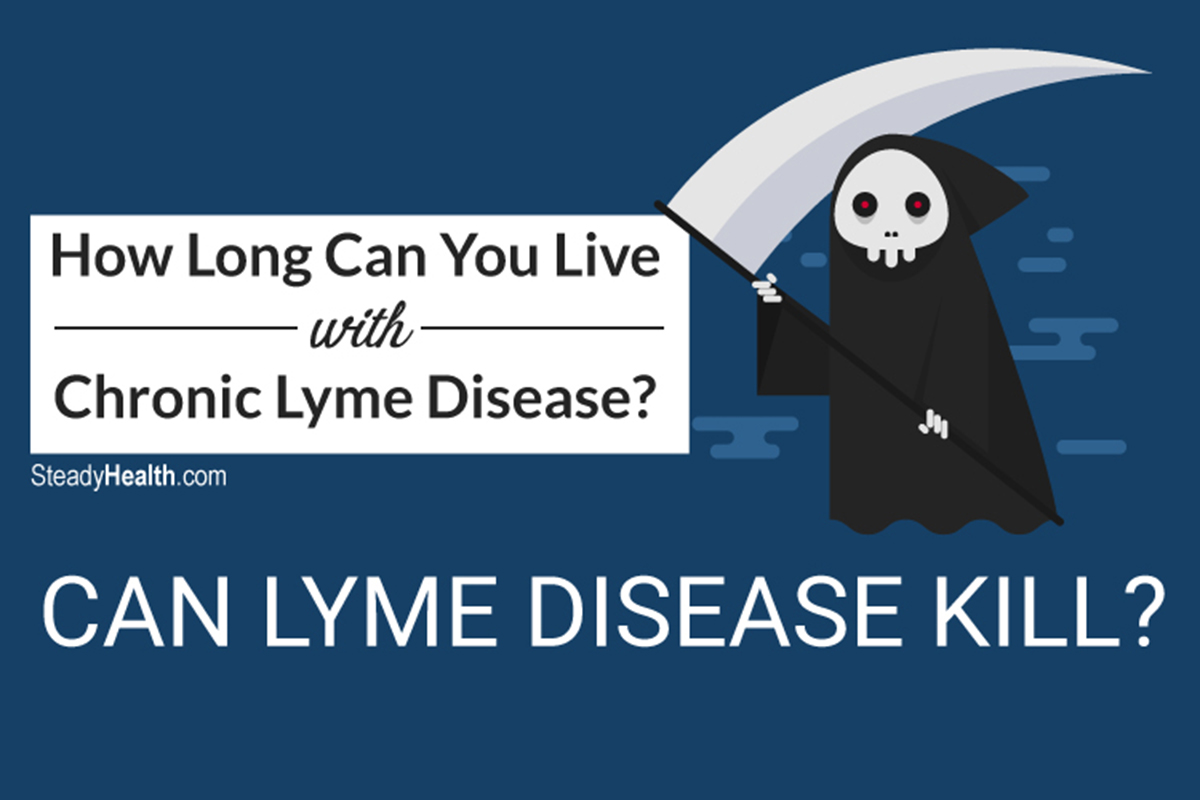Lyme Disease is, undoubtedly, nasty stuff.
Days to weeks after the fateful tick bite, Borrelia burgdorferi, the bacteria that cause Lyme, are still localized around the site of the initial encounter — but you're already likely to experience fever, joint and muscle pains, a stiff neck, and a general feeling of malaise. These symptoms are as generic as they are unpleasant, and unless you do end up with a notorious bull's eye rash, you may have no idea what you are dealing with. Weeks to months after that, scary signs like Bell's Palsy (facial weakness and paralysis), shortness of breath, and heart palpitations may make their appearance. And months to years later? Say hello to forgetfulness, a lack of concentration, speech problems, sometimes severely swollen joints, tingling feelings, and severe headaches. [1]

Lyme Disease is fairly easy to cure with oral antibiotics in the earliest stage [2], but if it goes undiagnosed and untreated, the consequences can be devastating. Once you start noticing all the signs of chronic Lyme Disease, or rather untreated Stage 3 or late disseminated Lyme Disease, your life might become so hard that you start wondering — how long can I live with chronic Lyme Disease?
Serious Complications Of Lyme Disease
Lyme arthritis was the first recognized symptom of Lyme Disease — the fact that a whole bunch of kids in Lyme, Connecticut ended up with it was what led to the discovery of Lyme Disease as a tick-borne infection in the 1970s. It's a Stage 3 manifestation resulting from Lyme Disease going untreated, and if you have it, you may experience chronic or recurrent bouts of joint swelling and pain in a few large joints, such as the knees. Your range of motion may be limited, painful, or both, enough so that you are unable to work. Managed with antibiotics, around 60 percent of patients with untreated Lyme Disease go on to develop Lyme arthritis. [3]
Acrodermatitis chronicum atrophicans, also sometimes called Herxheimer disease, is a serious dermatological condition associated with late disseminated Lyme Disease. A progressive condition, ACA eventually results in widespread skin atrophy and neuropathic pain. Initially, the affected area of skin will likely have a blue hue — a sign to see a doctor. [4]
Late Lyme encephalopathy is one of the scarier aspects of late-stage Lyme Disease. Encephalopathy itself is a general term for brain damage, and is often associated with kidney failure or cirrhosis. It can lead to a wide variety of symptoms, including [5]:
- Memory loss
- Migraines
- Fatigue
- Balance problems
- Hearing loss
- Slowed speech
- Seizures
While antibiotics will be recommended where late Lyme encephalopathy presents in patients with untreated Lyme Disease, research acknowledges that the brain changes remain even after treatment [5], and much research needs to be done before more comprehensive treatment guidelines can be developed.
Lyme endocarditis is an inflammation of the inner lining of the heart caused by untreated Lyme Disease, and the symptoms are all those of Stage 2 and 3 Lyme Disease [6]. In addition, patients may notice blood in their urine, small purple spots all over their bodies, red spots under their finger nails, and rapid weight loss. Endocarditis can, in turn, lead to its own complications — stroke, kidney disease, abscesses in major organs, paralysis, seizures, and even pulmonary embolism.
Lymphocytic meningitis is characterized by signs like vomiting, a stiff neck, an elevated body temperature, and loss of appetite. Though bacterial meningitis is the more dangerous form of the infection, meningitis caused by Lyme Disease is generally milder and not deadly.
Together these — and other, rarer symptoms of late-stage Lyme Disease — are described as Lyme neuroborreliosis, or neurological symptoms resulting from Lyme Disease. They are thought to occur in between 10 and 15 percent of untreated Lyme Disease patients, and antibiotics are always the first line of treatment after diagnosis. [7, 8]
So, Can You Die From Lyme Disease?
Yes, but death from Lyme Disease is extremely rare.
Between 1999 and 2003, 114 US death certificates listed Lyme Disease as a primary or contributing cause of death. Upon review, Lyme Disease was found to be the definite cause of death in a sole person. [9] A decade later, three more cases of cardiac death attributed to Lyme Disease were described in the scientific literature [10].
- Photo courtesy of SteadyHealth.com

